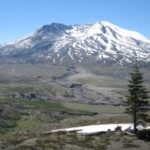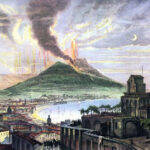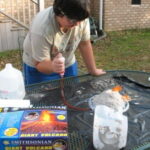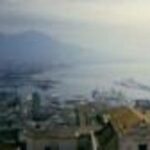Have you decided to factor volcanoes into a letter “V” or weather related unit this year? Do you already have your lesson plan ideas in place? If not, you may want to read onward:
Science and Geography
Begin the volcano lesson plan by letting the children listen to audio files of volcanic eruptions. There are several websites that contain eruption audio files. Two of them are Sound Dogs and AudioSparx. While the audio is playing in the background, let the children examine lava rocks (pumice) and small containers of ash. Then ask them if they can identify what all of those items are connected to. Once they’ve finished guessing, hold up a color photo of a volcano.
Continue the lesson plan by showing the children a map of the world’s tectonic plates. Copies of the maps may be found on the Volcano, Learner, Vulcan and Geology websites. Explain what tectonic plates are and how they move. You may also want to consider demonstrating how the plates move with the aid of homemade tangrams or puzzle pieces.
Proceed by explaining how those movements contribute to the formation of volcanoes. There are three handouts available through the Education website that you may find helpful in that regard. They are titled “Test Your Volcano Knowledge”, “All About Volcanoes” and “Volcano Diagram.” When you are finished lecturing, demonstrate the concepts mentioned with the use of two different science experiments.
The first science experiment involves the use of clear gelatin, food dye and a syringe. It is designed to help familiarize the children with the movement of lava. Full instructions for completing the first experiment are available through the CDS Hawaii website. The second experiment involves baking soda and other household materials. It is designed to simulate small volcanic eruptions. Instructions for completing it are available through the Science Days website.
History and Folklore
Afterward, throw a bit of history into your lesson plan by briefly talking about assorted volcanic eruptions that have occurred over the years. One way to do that is to read Thomas P. Lewis’ book “Hill of Fire” or Mary Pope Osborne’s “Pompeii: Lost and Found.” You could also opt to inject a bit of folklore into the lesson by talking about the Goddess Pele (Hawaii) and volcano dogs (El Salvador).
Music and Art
At this point, you may want to think about teaching the children Ron Brown’s song “It’s a Volcano.” If you are not familiar with the tune, a copy of it is posted on the Songs for Teaching website. You could also introduce them to the action rhymes “Old Volcano” and “I am a Volcano.”
Once they’ve finished singing, let them use sand dough and non-toxic paint to create miniature volcanoes. Should you not want to go through the trouble of making sand dough, you could always let the kids paint pictures using watercolors made with Atomic Fire Balls. To make the paints, simply drop an Atomic Fire Ball into warm water and give it a good stir or two.
Math
Speaking of Atomic Fire Balls, you may want to consider letting the children count and sort them or Red Hots as a part of a math activity. You can typically purchase boxes of either one through candy wholesalers and grocery stores.
Lastly, give each child a series of letter “V” handouts. The Education website has five that I would recommend utilizing. Each one includes at least a mention of volcanoes. The worksheets are titled “Letter Maze: V”, “Practice Tracing the Letter V”, “Letter Dot-to-Dot: V”, “V is For..” and “Trace and Write the Letter V.
Source: Personal Experience
More from this contributor:
Top 5 Notable Mount Vesuvius Eruptions
Best Snail Themed Snacks for Kindergarteners
Cool Cherry Themed Rewards for Pre-K Students
How to Avoid Yard Sale Disasters: A Lesson in Pricing Items





